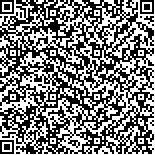| Quote
: |
徐子悟,朱政清,梁文萱,李霞,李云耀,周颖倩,刘碧源,孟蕾.基于氧化应激基因构建肝细胞癌预后模型及潜在中药预测分析[J].湖南中医药大学学报英文版,2023,43(12):2231-2237.[Click to copy
] |
|
| |
|
|
| This paper
:Browser 1268times Download 695times |
| 基于氧化应激基因构建肝细胞癌预后模型及潜在中药预测分析 |
| 徐子悟,朱政清,梁文萱,李霞,李云耀,周颖倩,刘碧源,孟蕾 |
| (湖南中医药大学, 湖南 长沙 410208;湖南大学, 湖南 长沙 410012;湖南省人民医院, 湖南 长沙 410005;湖南交通工程学院, 湖南 衡阳 421001) |
| 摘要: |
| 目的 肝细胞癌(hepatocellular carcinoma,HCC)是一种具有高侵袭性、诊断延迟和不良预后的肿瘤。本研究旨在构建一个基于氧化应激基因的HCC预后模型,并探索与该模型相关的中药成分。方法 研究使用癌症基因组图谱(the cancer genome atlas,TCGA)和基因表达集(gene expression omnibus,GEO)中的数据集,鉴定与氧化应激相关的差异表达基因。通过单变量和多变量Cox回归以及Lasso回归分析,构建一个用于预测HCC患者预后的模型。利用Coremine Medicine数据库预测模型基因潜在的相关中药成分,并进行归经和性味聚类以及分子对接分析。验证试验:采用MTT法检测预测中药马钱子和龙葵水提液对Hep3B细胞增殖的影响;使用Western blot检测马钱子和龙葵水提液对细胞中SCL7A11蛋白水平的调控。结果 在氧化应激相关基因中,EZH2和SLC7A11基因可用于构建预后模型。预测模型模型基因相关的中药主要归肝经、味苦和性寒。分子对接分析表明,龙葵中的5'-甲氧基松脂素和马钱子中的马钱子碱N-氧化物分别与SLC7A11的247号丙氨酸(Affinity=-11.0)和198号赖氨酸(Affinity=-10.2)具有较强的结合能力。实验证实,马钱子和龙葵水提取物对Hep3B细胞增殖呈浓度和时间依赖性抑制作用,并减少了Hep3B细胞中SLC7A11蛋白的表达。结论 本研究成功构建了一个基于氧化应激基因的个体化HCC预后模型,并预测了与模型基因相关的潜在中药成分。 |
| 关键词: 氧化应激 肝细胞癌 风险评估模型 数据挖掘 生物标志物 中药 |
| DOI:10.3969/j.issn.1674-070X.2023.12.013 |
| Received:March 16, 2023 |
| 基金项目:湖南省中医药管理局科研课题(2021065);长沙市自然科学基金项目(kq2014085);湖南中医药大学校级科研基金项目(2021XJJJ017);湖南中医药大学生物工程学科。 |
|
| Prognostic model of hepatocellular carcinoma based on oxidative stress genes and the potential herbal constituents analysis |
| XU Ziwu,ZHU Zhengqing,Liang Wenxuan,LI Xia,LI Yunyao,ZHOU Yingqian,LIU Biyuan,MENG Lei |
| (Hunan University of Chinese Medicine, Changsha, Hunan 410208, China;Hunan University, Changsha, Hunan 410012, China;People's Hospital of Hunan Province, Changsha, Hunan 410005, China;Hunan Institute of Transportation Engineering, Hengyang, Hunan 421001, China) |
| Abstract: |
| Objective Hepatocellular carcinoma(HCC) is a tumor with high aggressiveness, delayed diagnosis, and poor prognosis. This study aimed to construct a prognostic model of HCC based on oxidative stress genes and explore the herbal constituents associated with this model.Methods Datasets from the cancer genome atlas(TCGA) and gene expression omnibus(GEO) were used to identify differentially expressed genes associated with oxidative stress. Models were constructed to predict the prognosis of HCC patients by univariate and multivariate Cox regression and Lass o regression analysis. The potential herbal constituents of the modeled genes were predicted using the Coremine medical database. The constituents were clustered for their properties, flavors, and meridians tropisms. Moreover, molecular docking was performed with the modeled genes and the herbal constituents. Experimental validation:The effect of the aqueous extracts of the predicted Maqianzi(Strychni Semen) and Longkui(Solanum Nigrum) on cell proliferation and SLC7A11 protein expression was determined by MTT and Western blot.Results Among the oxidative stress-related genes, EZH2 and SLC7A11 could be used to construct prognostic models. The Chinese medicines related to the predictive model genes mainly entered the liver meridian, and had bitter flavor and cold nature. Molecular docking analysis showed that among the predictive model gene-related Chinese medicines, 5'-methoxypinesterin in Longkui(Solanum Nigrum) and brucine N-oxide in Maqianzi(Strychni Semen) bind strongly to alanine acid residue in position 247(Affinity=-11.0) and lysine residue in position 198(Affinity=-10.2) of SLC7A11, respectively. It was confirmed that the aqueous extracts of Maqianzi(Strychni Semen) and Longkui(Solanum Nigrum) showed concentration and time dependent inhibitory effects on the proliferation of Hep3B cells and reduced the expression of SLC7A11 protein in Hep3B cells.Conclusion In this study, we successfully constructed an individualized HCC prognostic model based on oxidative stress genes and predicted the potential herbal constituents associated with the model genes. |
| Key words: oxidative stress hepatocellular carcinoma risk assessment model data mining biomarkers Chinese medicines |
|

二维码(扫一下试试看!) |
|
|
|
|


